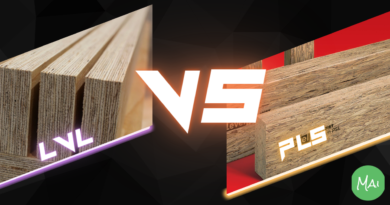What’s Really Holding That Machine Together?
Big machines are loud, powerful, and kind of awesome to watch. Whether it’s a bulldozer on a construction site or a giant robotic arm in a factory, they move with so much force that it almost looks effortless. But here’s something a lot of people never really think about—what’s actually holding all of that metal together?
It’s not magic. It’s not glue. It’s something way more simple: bolts and set screws.
Tiny Parts, Massive Jobs
Imagine a huge crane lifting steel beams into place. Now imagine what would happen if just one small part slipped. That’s why every nut, bolt, and screw has to be exactly where it belongs—and has to stay there. Bolts and set screws aren’t just little bits of metal. They’re what keeps entire machines from falling apart.
In places where machines are moving non-stop—like factories or construction zones—these parts have to be seriously tough. They can’t snap under pressure or shake loose when something vibrates. That’s why choosing the right type matters. One great place to explore a wide selection of Bolts Set Screws that are made for these heavy-duty situations is through suppliers that focus specifically on industrial use. They’ll have options that can handle intense force, heat, and wear over time.
So, What Even Is a Set Screw?
Most people know what a bolt is—a metal rod with threads that fits through holes and tightens with a nut on the other side. But a set screw is a little different. It’s smaller, usually doesn’t have a head, and it goes all the way inside the thing it’s holding.
Set screws are used to keep parts from shifting or slipping. They’re often found in places where parts are supposed to spin—like inside motors, gears, or wheels. Let’s say there’s a gear on a spinning rod. Without a set screw holding it in place, it would just slide off once the motor starts up. That’s a huge problem in machines where timing has to be perfect.
Set screws dig in tight, usually right into another metal surface, creating a strong grip. They don’t rely on a nut or washer to hold them. That’s what makes them so useful in smaller, moving parts of a machine.
Bolts Do the Heavy Lifting
While set screws handle smaller, more detailed jobs, bolts are in charge of the big connections. Think of two giant steel beams being fastened together. Welding is sometimes used, but it’s not always the best choice—especially when parts need to come apart later for repairs. That’s where bolts come in.
Bolts are strong, reusable, and easy to tighten or loosen with a wrench. In heavy machinery, you’ll find them everywhere—from the frame to the engine mounts. Without bolts, there wouldn’t be a reliable way to keep machine parts lined up and firmly in place.
Even in machines that weigh several tons, bolts work as the main fasteners that keep everything together under pressure. They’re chosen based on strength, shape, length, and what kind of load they’ll need to hold—whether it’s pulling, pushing, twisting, or a mix of all three.
Vibration? No Problem (If You Pick the Right Parts)
One of the biggest challenges in industrial machines is vibration. Big motors shake. Presses slam down with force. Conveyors roll and rattle. All that motion can slowly loosen screws or bolts—especially if they weren’t designed to stay tight in those conditions.
That’s where locking mechanisms come in. Some bolts are paired with lock washers. Others have special threads that resist loosening. Set screws can also come in different tip styles—flat point, cone point, cup point—each one meant for a specific type of grip.
Using the wrong type can lead to constant maintenance or, worse, total machine failure. That’s why engineers spend a lot of time figuring out which bolt or set screw is the best match for each part of a machine.
It’s Not Just About Strength—It’s About Fit
The size and shape of these fasteners are also super important. For bolts, the thread pitch (how tight or loose the spirals are) has to match the nut perfectly. For set screws, the diameter and length need to be just right to press in without damaging the surface.
Then there’s the material. Steel is strong and common, but in places with moisture or chemicals, stainless steel might be better because it doesn’t rust. In other cases, heat-resistant alloys are used when parts are near high temperatures, like in engines or power tools.
A good fit means less wear and tear. It also means safer machines that last longer without breaking down. That’s a big deal when a single hour of machine downtime can cost a company hundreds or even thousands of dollars.
You’ve Probably Seen Them Without Noticing
Even outside of factories, these fasteners are everywhere. Ever seen those thick bolts holding a bridge together? Or those screws on gym equipment? Or even the little ones in your bike’s handlebars? Those are all doing the same basic job—holding parts tightly in place so they don’t move in ways they shouldn’t.
In industrial equipment, it’s just that everything is bigger, heavier, and under more stress. So the fasteners have to be tougher, too.
Keeping Machines Safe and Workers Protected
It’s not just about keeping the machine working. It’s also about keeping people safe. If a bolt breaks or a screw slips, the machine could go out of alignment—or stop working completely. In some cases, that can cause serious injuries or even damage to the building it’s in.
That’s why regular checks are a big part of industrial work. Workers inspect bolts for cracks, rust, or signs of wear. Set screws are tested to make sure they haven’t backed out. If anything’s off, it gets replaced right away.
The Real Power Behind the Machine
So next time you see a big piece of machinery, don’t just focus on the engine or the flashing lights. Think about the small things you can’t see—like bolts and set screws—that are holding the whole thing together. Without them, the machine wouldn’t just stop working. It could literally fall apart.
These parts may be small, but they’re a huge part of what makes heavy equipment safe, strong, and ready to do the job. Whether it’s construction, manufacturing, or transportation, bolts and set screws are behind the scenes making it all happen—quietly, reliably, and constantly.
And now you know: when machines are doing serious work, it’s the tiniest pieces that make the biggest difference.




